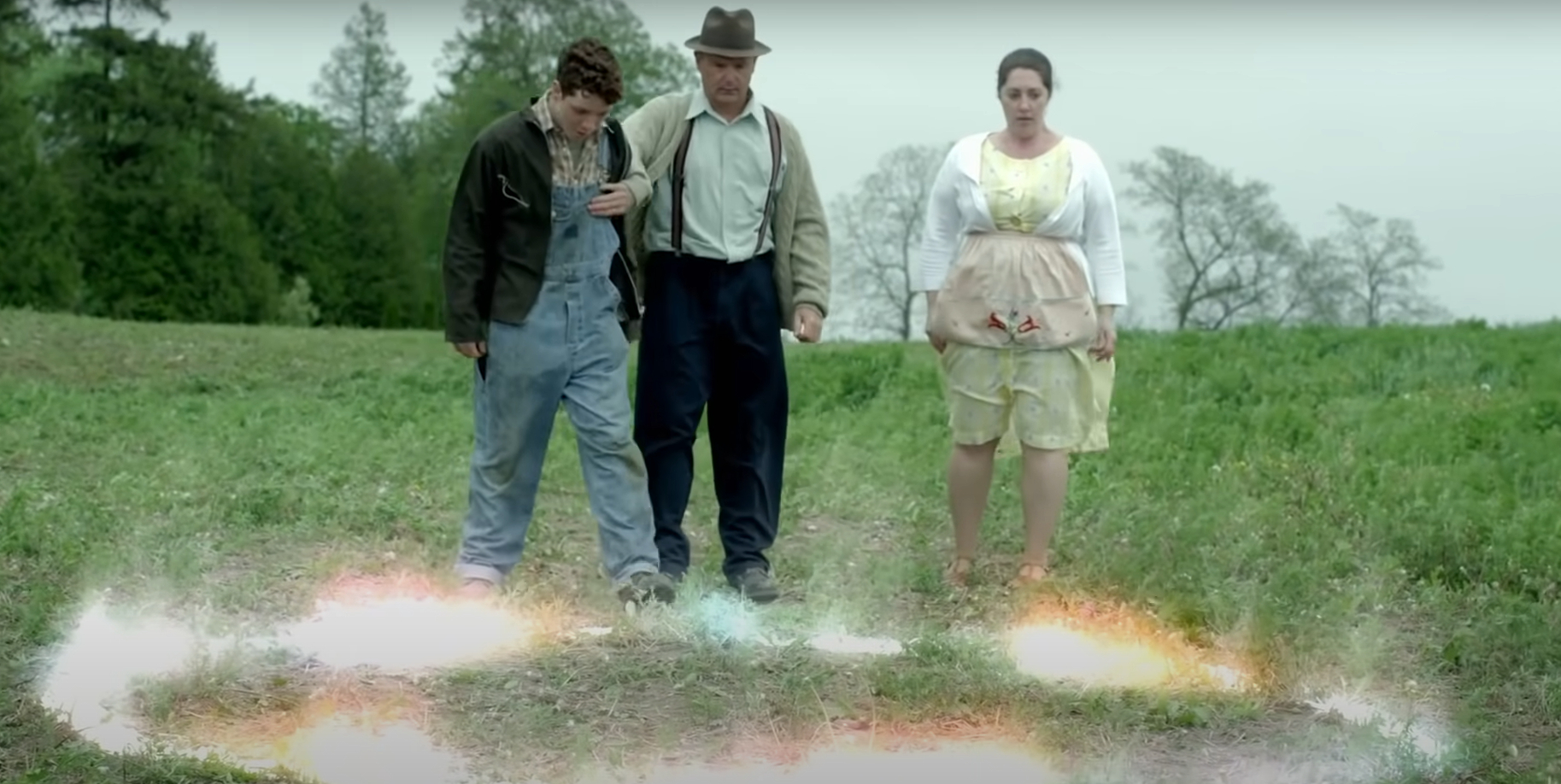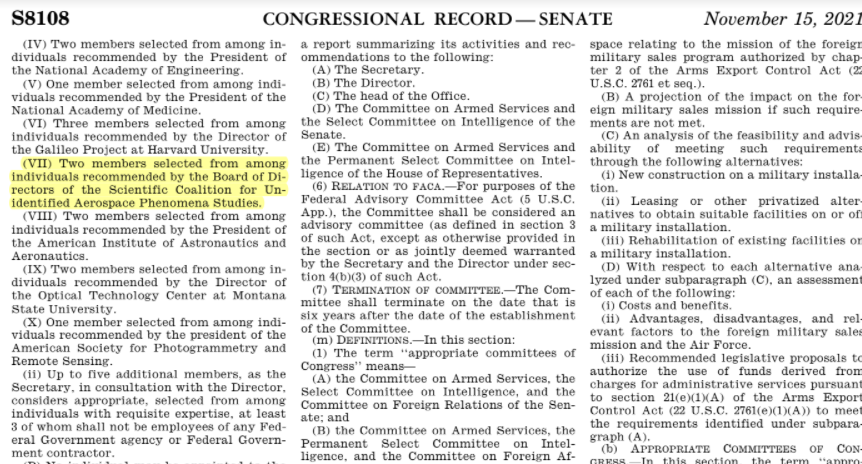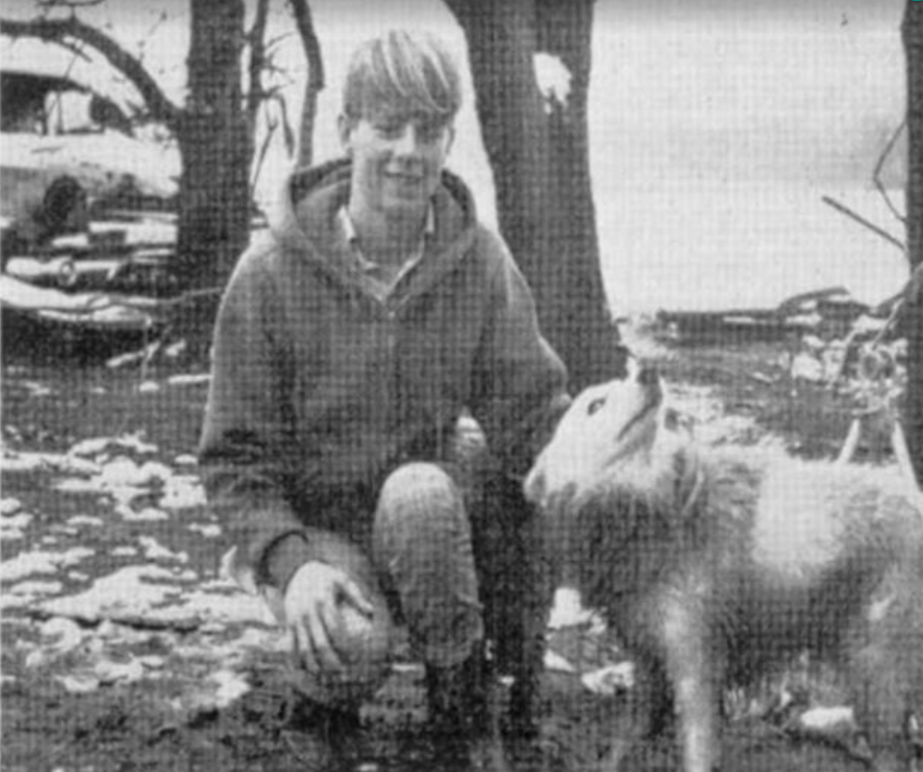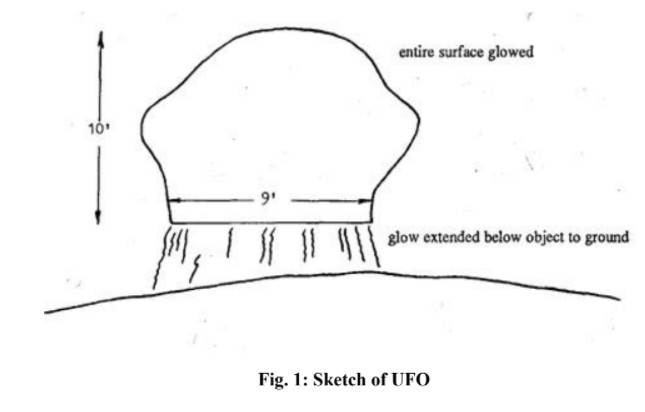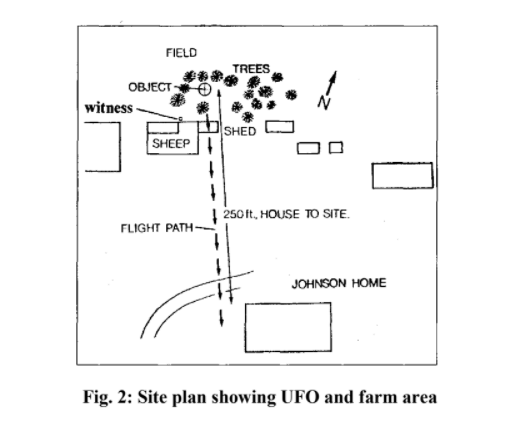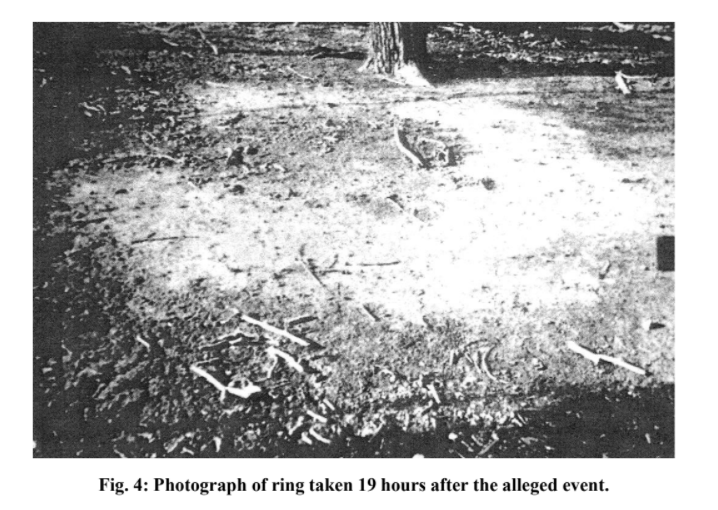The UAP Cold Case That Could Yield New Physical Insights Into The Biological Effects And Nature Of The Phenomena
The above image stems from a re-creation of the case (source YouTube)
Written - 2 December 2021
The Scientific Coalition for UAP Studies (SCU) has published a new appraisal report regarding a significant 1971 Unidentified Aerospace Phenomena (UAP) case, which took place in Delphos, Kansas.
And the site where the alleged encounter took place may still contain contaminated soil, which can be scientifically studied.
The case involves a young farm boy, who whilst tending to his sheep in November 1971, heard a loud noise before seeing a bright luminous object hovering above the ground.
The boy’s parents also witnessed the UAP and saw how the object had apparently left behind a glowing ring-shaped impression around soil, which was also photographed.
The UAP incident involves:
Physiological Effects
Contaminated Soil With Apparent Baffling Properties
At Least One Of The Five Observables
Three Witnesses
Disturbance Of Animals
It also involves the Battelle Memorial Institute, which up until now, has not been forthcoming with its analysis of the soil samples, which the Institute requested following the event. That is despite numerous requests for data stemming from its analysis.
At this moment, a FOIA request is being considered, as suggested in the SCU report, so that the data can be released from Battelle and another lab that also studied the soil samples.
However, despite setbacks involving Battelle, there were further scientific studies conducted. In late 1977, Dr. Erol Faruk (author of the latest SCU report) conducted a major organic chemical analysis of the material.
Faruk discovered that soil from the site of the encounter was contaminated with a highly water-soluble soap-like compound; which paradoxically led to its hydrophobicity (i.e. a physical ability to repel water) and, upon isolation and characterization, revealed chemiluminescent (meaning the emission of light from a chemical reaction) properties.
The new SCU report puts together all other necessary facts to assist in validating the incident as truly abnormal.
Author Dr. Faruk, who is experienced in organic chemical analysis, provided the following comments to Liberation Times:
“There is hope that the case can yield further analysis. In 2020, a Kansas State University study team visited the Delphos farm and dug up some of the affected material, overseen by Ronald Johnson, who aged 16 witnessed the incident.
Johnson had buried the ring surface with further normal soil after the incident which means that the contaminated material might have been protected from any further oxidation.
The KSU team was able to reproduce the ring soil hydrophobicity, on video, which is a key abnormality associated with the 1971 case.
The further scientific study could therefore potentially be conducted on newly isolated soil samples, which might then yield a greater understanding of what happened on that day in November 1971.
One possibility is to isolate a sufficient amount of the red-colored silver salt and perform isotopic analysis of the elements that it’s composed of.
Another is to verify that the compound is present as its calcium salt when the ring soil is simply extracted with water. This result would not be expected from extracting normal soil and would suggest that the compound was placed there from an external source.”
The report’s publication comes at a time when the SCU has been identified as a contributor to an Aerial and Transmedium Advisory Committee, as mentioned within the Gillibrand-Rubio amendment, proposed within the U.S. National Defense Authorization Act 2022.
Reference to the SCU within the Gillibrand-Rubio Amendment
What Happened On That Fateful Day In 1971?
A young Ronald Johnson (Above)
The young Ronald Johnson was tending the sheep with his dog at 7:00 p.m. CST on November 2, 1971. His mother called from the back door of the house, inviting Ronald to dinner. Ronald answered that he would be there in a few minutes.
But Ronald didn’t arrive for dinner. Minutes later, his mother called again after she and Ronald’s father had completed their meal.
But Ronald did not respond. His mother reported that she saw nothing odd, such as radiance, and that she did not hear anything from outside.
Something wasn’t right.
So, what happened to Ronald during those moments?
Ronald has described that while working in the sheep enclosure (and immediately after his mother called him the first time), he heard a rumbling sound, like an old vibrating washing machine.
He then saw a brightly lit UAP hovering 75 feet away.
Although no real metallic surface could be seen, the youngster could discern a distinct outline to the UAP. The top and bottom of the UAP looked to be domed, with a slight bulge in the center.
A sketch of the Delphos UAP (Above)
Between the base and the ground, there was a dazzling light. The UAP was floating approximately two feet above the ground. Ronald never saw it touch the ground though, despite the ground soil’s apparent contamination that could be seen following the event.
When Ronald saw the object, he stopped and noticed how quiet his dog was. He described the UAP as emitting blue, red, and orange glows about its surface.
The UAP was approximately nine-feet in width and seemed to be around 10 feet in height. Ronald couldn't see any surface features due to its glowing nature, which also illuminated the nearby trees and ground below.
When the young Ronald gazed straight at the UAP, his eyes started to hurt. In fact, for many days after the event, Ronald reported that his eyes were irritated and that he suffered from headaches.
The presence of the UAP (or perhaps the sound) disturbed the sheep, as Ronald described how the animals were bellowing during the encounter. Ronald has claimed that the sheep would leap out of their enclosure every evening for a week following the encounter.
After a few minutes of witnessing the incident, Ronald described how the UAP’s base brightened. The light at the base became larger, and the object proceeded to climb at an angle, passing over an adjacent shed by around four feet. As it passed over the shed, the UAP emitted a jet-like noise.
As it moved, the UAP also became brighter. This caused Ronald to temporarily lose his eyesight. But moments later, after recovering his sight, he ran to the farmhouse to tell his parents about what he had seen.
Plan showing farm & where the UAP was sighted (Above)
His Parents Witness The UAP & A Luminous Ring On The Ground
Ronald’s parents didn’t believe him at first. This caused him to become agitated.
But eventually, his parents followed him outside to observe the UAP in the southern sky.
It appeared as a bright luminescent object receding into the distance and bearing “the color of an arc-welder.”
At this point, the UAP was estimated to be at least half the size of the full moon, which could also be seen in the south-eastern sky at the same time.
Following their observation, Ronald and his parents walked to the site and claim they saw a luminous ring in the darkness below where the UAP was seen hovering.
The glowing ring so impressed his mother that she ran back to the house to fetch a camera. With this, she took a photograph of the effect. The image is quite astonishing, especially as no flash attachment was used to take the photograph. The light from the ring was described as bright enough to read a newspaper. Ronald compared the ring’s light emission to a 'fluorescent glow.'
The soil's surface was a bright grey-white. According to reports, portions of nearby trees were also glowing. Ronald’s parents touched the surface of the ring, but described how it was not warm, as one might suspect. The dirt surface had an odd texture, like a slick crust, as if the ground had crystallized.
The above image was taken by Ronald’s mother immediately following the event, without a flash attachment. As you can see, it shows a fluorescent glow.
Apparent Physical Effects From The UAP
After touching the soil, Ronald’s mother felt numbness at the tips of her fingers.
She wiped her palm on her leg to remove dirt - it was then that this part of her leg turned numb as well. She compared the numbing sensation to that of a local anesthetic.
The father also reported numbness in his fingertips following contact with the soil.
Due to the numbness, Ronald’s mother, who worked at a care home, claimed she was unable to take her patients’ pulse measurements for two weeks. She went on to describe how she couldn't feel anything with her fingertips.
Despite these physical effects, the family did not seek immediate medical attention. But they did contact a reporter named Thaddia Smith, who arrived the next day, November 3.
Smith contacted the local sheriff, Ralph Enlow, who arrived at the scene on that same day. After inspecting the site, the sheriff noted:
“We observed a ring-shaped somewhat like a doughnut with a hole in the middle. The ring was completely dry with the hole in the middle and outside of the ring mud. ....We were given a picture taken the previous evening by Mrs. Johnson which showed that the ring glowed in the dark. The soil sample taken was almost white in color and very dry...the soil was not radioactive”
The above image was taken the next day, and a ring outline can still be clearly observed through its white soil
A month later, lead MUFON investigator Ted Phillips visited the area and photographed the ring, which was outlined by un-melted snow.
Phillips questioned the family and collected surface and subsurface samples of the dry ring soil under the snow, as well as control material from outside the ring.
He discovered that the ring soil, down to a level of 14” deep, had become extremely resistant to absorbing water.
The above image taken a month following the event, and shows the ring outlined by un-melted snow
Phillips sent soil samples to various labs. About the analysis, which was later conducted by its author in 1977, the SCU report states:
“On receipt, the ring soil was immediately checked for its reported hydrophobicity by adding water to a sample at ambient temperature. The material was found to behave almost like glass, with the water simply beading upon its surface. A spatula was used to forcibly break up the aqueous mixture, which eliminated the hydrophobicity to leave behind a reddish suspension.
The mixture was centrifuged to give a clear red solution which contrasted with the colorless solution obtained from control soil samples similarly treated. It was noted that all the ring soil samples were similarly water-resistant.
Visible spectra were taken for surface and sub-surface ring material which both showed a greater absorption towards the 286-333nm region of the spectrum (Fig 5). Each curve was recorded after extracting 70mg of the relevant soil sample with 0.5ml water. The greater absorption of the ring soil extracts towards the visible region of the spectrum illustrates the degree of impregnation of the ring soil with the compound, in comparison to that of control soil.”
(Above) Microscopic images of the ring soil sample affected by the UAP (left) compared with a controlled soil sample (right)
Despite such intriguing characteristics, the compound’s precise nature eluded proper identification.
In the late 1970s, the Battelle Memorial Institute in Dayton, Ohio unexpectedly requested the ring soil material for analysis from Phillips.
It conducted this with another lab in St Louis for many months. But despite multiple requests for information, Phillips stated that nothing was ever heard again from the two labs regarding the conclusions of their analysis.
The SCU Report's Conclusion Suggests Something Extraordinary
The author of the SCU report concludes that although his hypothetical scenario of a UAP spraying an aqueous (i.e. dissolved in water) solution into the ground may seem like science fiction, it is a model that perfectly explains the perplexing elements of the sighting account.
The idea that a UAP may use an envelope of a chemical solution to generate light and hence illuminate itself isn't that far-fetched.
One of the most intriguing aspects of UAP is their bright glows, such as the often described 'glowing red ball' seen by witnesses, or green/orange/blue variations of the same.
The SCU report ends by referencing a 2001 NARCAP study titled ‘UAP - Eighty Years of Pilot Sightings’, in which a collection of 1,305 examples of military, airliner, and private pilot sightings from 1916 to 2000 is used to illustrate the illumination aspect.
The NARCAP study states:
“Only 31 of these examples used the phrase 'metallic' to describe the UAP, but 71 were 'luminous,' 22 were 'glowing,' 116 were 'orange,' 122 were 'green,' and 69 were 'blue,' with only three cases using the less evident term 'fluorescent.' “
Interestingly, a similar French case from 1957 with characteristics similar to those of the Delphos incident is referred to in the SCU report. The UAP is described as appearing and disappearing at five-minute intervals and sometimes displaying fan-like luminosity beneath.
The details of the Delphos case are certainly intriguing.
Certain aspects of the case, such as physiological effects, may become very important, especially if the Gillibrand-Rubio Amendment passes, which mentions an assessment regarding health-related effects for those that encounter UAP.

